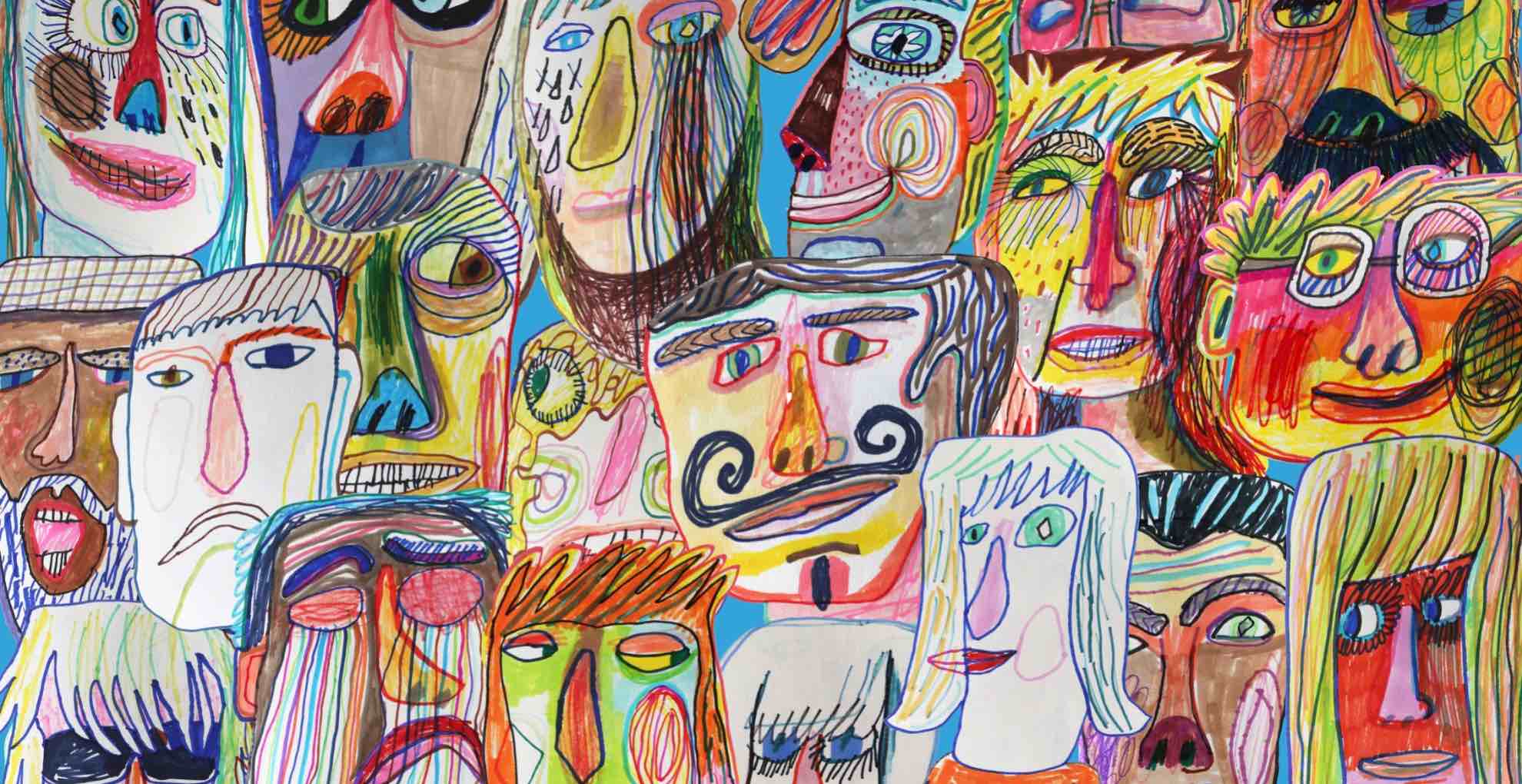In April, the journal JAMA Psychiatry published a study that was reported to be the first of its kind. The randomized clinical trial adapted an insomnia treatment program for Black women, which adjusted elements such as visual content so that participants felt better represented, and included discussion of how the unique experiences of Black women can contribute to their insomnia. The researchers found that a culturally tailored program was more effective at engaging participants — while still comparably improving their insomnia symptoms — than the untailored treatment.
While the study is new, the research touched on a long-discussed topic in the field of mental health: How should therapists adapt their approaches for people of different cultures, including for racial and ethnic minority groups?
Psychological research has historically skewed towards studying White people in Western societies, and practitioners shouldn’t assume that treatment and diagnosis tools designed for those populations will work for everyone. It’s important to make sure that underserved communities are not being left out from effective services. “Cultural adaptation” refers to preserving the essential components of evidence-based tools, while modifying certain aspects to increase engagement and relevance for the cultural group being served. Various factors, including language barriers, setting, race, ethnicity, country of origin, treatment goals, education level, and religious beliefs must all be considered.
Evidence suggests that cultural adaptation is effective. Yet, despite growing interest and awareness, it remains unclear the extent to which therapists are practicing cultural adaptation with their patients — and if they are, whether they’re doing so effectively.
The mental health field must make cultural adaptation a priority in both research and practice. Psychologists must build upon previous work to understand how best to adapt therapies, along with screening and diagnostic tools. They should also explore barriers to applying those therapies in clinical settings. Furthermore, there is a critical need for standardized frameworks so that culturally adapted interventions can be routinely and feasibly applied.
In the U.S., the American Psychiatric Association’s main resource on the topic specifies some guidelines, but is nearly 10 years old, lacks a referral to standardized tools and approaches to use for implementation, and it is unclear whether and how these are incorporated in practice. And while the latest edition of the Diagnostic and Statistical Manual of Mental Disorders (DSM-5), a resource that mental health professionals use to guide diagnoses, includes a Cultural Formulation Interview — questions that professionals use to make cultural assessments related to diagnosis and treatment — experts believe it is not used as much as it can be and still needs to be refined. Better guidance from organizations such as the APA would help practitioners and organizations become better trained and able to adapt therapies for different cultures.
Some institutions have embraced working and conducting research in culturally sensitive ways — and more should. Organizations like UNICEF and the World Health Organization are among those that have recognized the relationship between culture and health. For instance, UNICEF has developed cultural adaptations of screening tools to improve global measurements of adolescent mental health through the Measurement of Mental Health Among Adolescents at the Population Level (MMAP) initiative, a project which I’ve been fortunate to collaborate on. Even though mental health conditions are among the leading causes of disability worldwide, data on psychological conditions are limited in low- and middle-income countries, and few instruments are validated in these settings.
“You may completely misdiagnose the patient if you don’t understand the cultural variations,” said Shervin Shahnavaz, a clinical psychologist and psychotherapist at the Center for Psychiatry Research and Center for Education & Research at the Karolinska Institute.
It isn’t always obvious when a treatment or diagnostic tool needs to be adapted. Sometimes the need for adapting screening or treatment is clear, for instance, in the case of internally displaced people by the Boko Haram insurgency in Nigeria or refugees in humanitarian settings coming from unique, traumatic situations, who may face language barriers and have different cultural expressions and understandings of mental and psychological health.
Other times, the cultural disparities may be less obvious. For example, the insomnia study looked at an American population, but the treatment was adapted for Black women because they been historically underrepresented in research, display high rates of sleep problems, and have been previously shown to be less likely to initiate and continue treatment. According to Eric Zhou, lead author of the study and an assistant professor of pediatrics at Harvard Medical School, while the study didn’t look at the exact reasons for the increased engagement, one main factor could be the treatment experience. Because the culturally adapted treatment used materials featuring Black women, it better reflected the study’s participants and may have made the program more relevant for them.
It might be the case that methods don’t need to adapt all that much — for instance, cognitive behavioral therapy, or CBT, which was used in the insomnia study, is known to be a flexible protocol according to Iony Ezawa, an assistant professor of psychology at the University of Southern California. Similarly, a validating approach — in which the therapist affirms that the patient’s experiences are understandable — could in fact be the most effective treatment for certain groups. After all, the therapeutic relationship is one of the best predictors of treatment outcomes. But without further research and better guidance, clinicians may be left with guessing best methods.
Furthermore, a study published in May explored whether a patient’s race affected how therapists provided CBT — a common and evidence-based treatment for depression. Ezawa and colleague Daniel Strunk, a professor of psychology at the Ohio State University, reported that therapists in the study found it less appropriate to use cognitive techniques typically employed in CBT when working with Black patients compared to White patients. While validation could be considered a form of adaptation, in that it’s culturally sensitive, it’s unclear if it is the most effective approach. As the study’s authors pointed out, “Whether such adaptations enhance or detract from the care of Black patients is an important issue that merits future investigation.” The field of psychology needs such studies, along with better guidance on how best to apply culturally adapted treatments.
Until then, embracing the practice of patient-centered care, is critical. Therapists must continue to be mindful and respectful of cultural differences. Everyone, regardless of their background deserves equitable mental health care.
Kasra Zarei is a freelance science journalist whose work has appeared in Slate and other outlets. He is a Ph.D. and M.D. student in global mental health.












Comments are automatically closed one year after article publication. Archived comments are below.
This article focuses on tinkering with a dominant-culture methodology to make it more culturally appropriate for other groups. It would be great to read about approaches that grow out of other cultures, and are uses to provide culturally specific/culturally responsive care. I am no expert in this area, but I know there are examples of work being done among Tribal Nations within the U.S. focusing on both mental and physical well being.
I had a doctoral student from Ethiopia who co-created a culturally acceptable depression assessment approach with the local Ethiopian community. This approach has been taken up by Ethiopian communities all over the US. One of the problems with the DSM-5 is that it is a culturally bound classification system created by the dominant white, monolingual English speaking power structure in the US. Many languages, such as Amharic, do not have a word or concept for the Western notion of depression. As the research notes, the vast majority of psychological research has been conducted with white, Western subjects so the evidence based tools that come out of that research could only extrapolated to white, Western populations. I am wondering how one culturally adapts a tool for white, monolingual English speaking Westerners to patients from non-western countries who speak languages that do not have words or concepts that line up in any way with the DSM-5? Richard Mollica’s bicultural diagnosis system is a good example of a culturally congruent diagnosis and treatment approach. I think that we need to be utilizing participative action research approaches to co-create culturally acceptable and effective approaches to mental health issues in these communities.